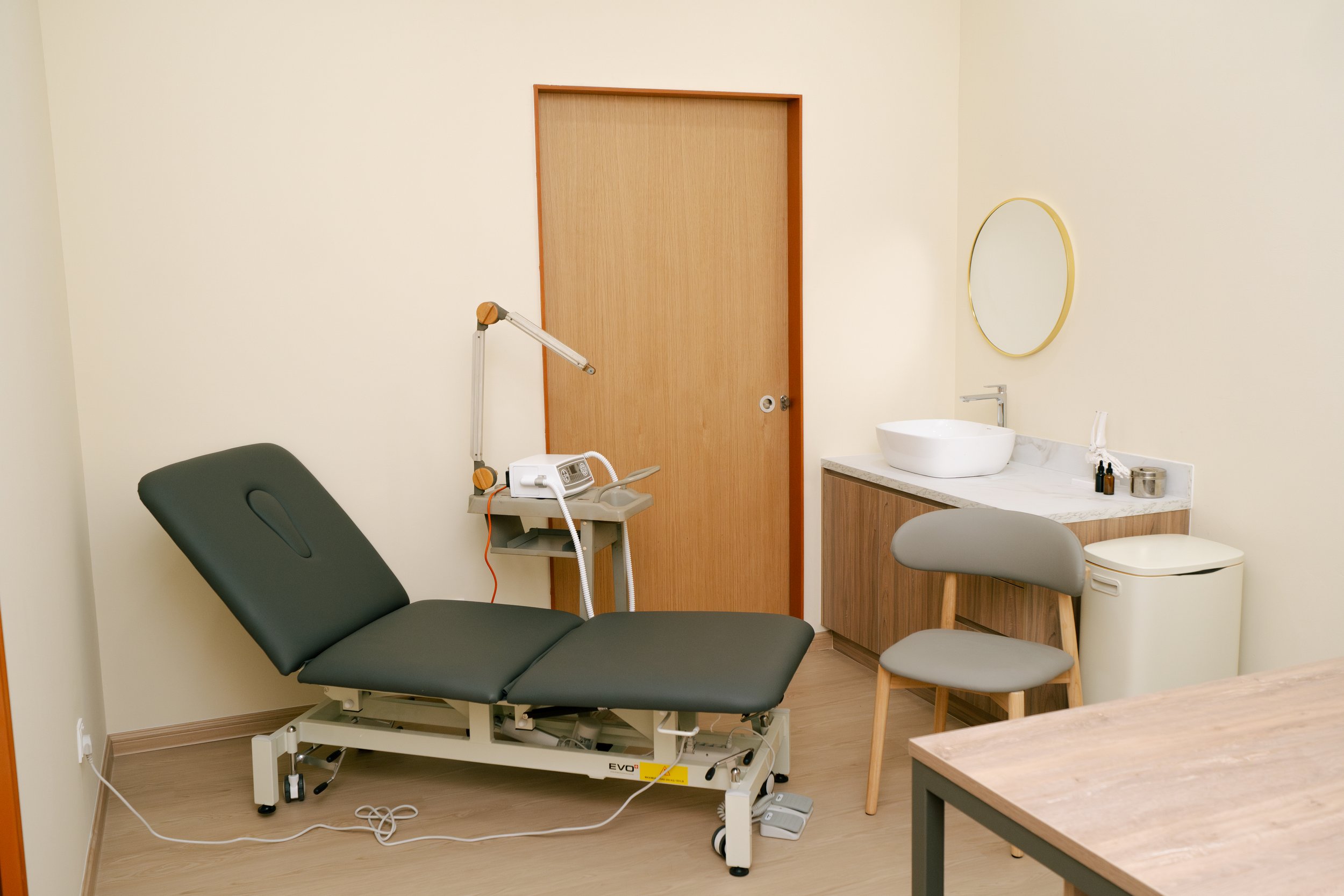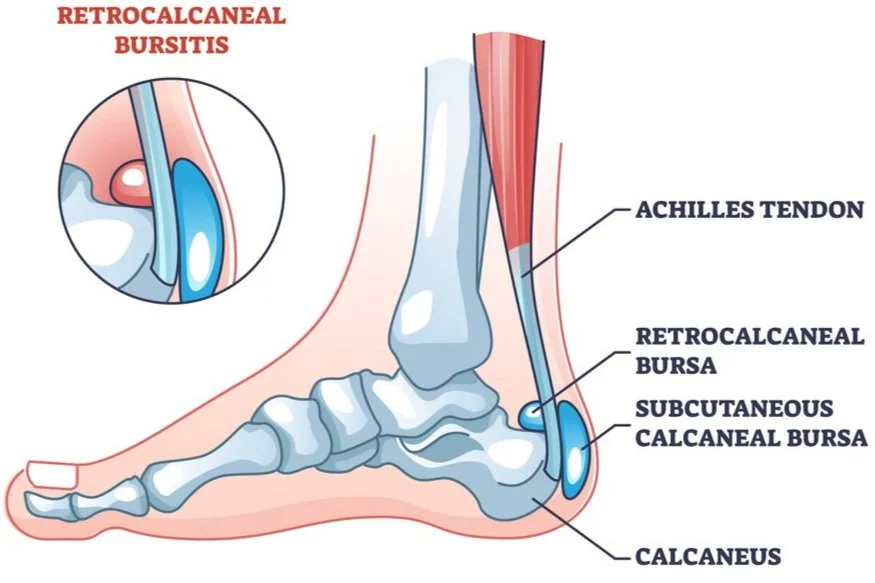
Bursitis
What Is Bursitis?
Bursitis occurs when a bursa—a small, fluid-filled sac that cushions the space between bones, tendons, and muscles—becomes inflamed. These bursae help reduce friction in your joints and soft tissue. When subjected to excessive pressure, overuse, or irritation, they can swell, causing pain, limited movement, and discomfort.
There are over 140 bursae in the human body, and they play a crucial role in smooth, pain-free movement. In the lower limb, bursitis most commonly affects the heel, ankle, knee, and forefoot.
What Causes Bursitis?
Bursitis usually develops due to repetitive motion, sustained pressure, or direct trauma to the affected area. Some common causes include:
Repetitive Movements & Overuse
Running, jumping, or prolonged walking
Sports such as tennis, basketball, or football
Occupations involving kneeling, climbing, or squatting (e.g. gardeners, tilers)
Biomechanical & Structural Factors
Flat feet or high arches
Overpronation (excessive inward rolling of the feet)
Poor joint mobility and range of motion
Abnormal gait patterns
Footwear
Tight, narrow, or worn-out shoes
Hard-soled shoes with no cushioning or support
Additional Risk Factors
Age 40+, due to reduced fat padding around joints
Pre-existing conditions like arthritis, gout, or diabetes
Presence of bunions, Morton’s neuroma, or tendonitis
Symptoms of Bursitis
Bursitis symptoms can develop gradually or suddenly, depending on the cause and severity. The most common signs include:
Pain near joints (heel, ankle, toes, or knees)
Tenderness and swelling at the site
Redness or warmth around the joint
Stiffness and reduced range of motion
Pain when walking or standing, especially barefoot
Numbness or tingling (if nearby nerves are compressed)
Pain with certain shoes or activities
Common Types of Bursitis We Treat
Retrocalcaneal bursitis (back of heel near the Achilles tendon)
Subcutaneous calcaneal bursitis (under the heel)
Forefoot bursitis (between or beneath the metatarsal heads)
Prepatellar bursitis (kneecap)
Diagnosing Bursitis
To accurately diagnose bursitis, our podiatrists will:
Conduct a thorough clinical assessment and medical history review
Palpate the affected area to check for tenderness and swelling
Evaluate your gait, foot mechanics, and joint mobility
Refer for ultrasound imaging if necessary to confirm bursitis and rule out other conditions like tendonitis or Morton’s neuroma
Bursitis Treatment at KL Foot Specialist Podiatry
Our podiatrists use evidence-based, non-surgical treatments to relieve bursitis pain and inflammation while addressing the underlying causes.
Conservative Treatment Options
RICE protocol: Rest, Ice, Compression & Elevation
DolorClast® High Power Laser Therapy: Reduces pain and inflammation non-invasively
DolorClast® Shockwave Therapy: Accelerates tissue healing
Custom Orthotics: Offload pressure from affected bursae
Foot and Ankle Strapping: Reduces strain on inflamed areas
Footwear Advice: Recommendations for supportive, cushioned shoes
Stretching & Strengthening: Corrects muscular imbalances
Activity Modification: Adjusts load and exercise to avoid overuse
Anti-inflammatory Medication: Prescribed when clinically appropriate
What Happens If You Ignore Bursitis?
Untreated bursitis can lead to:
Chronic, long-term pain
Nerve compression and associated numbness or tingling
Altered gait and secondary injuries (hip, back, or knee pain)
Reduced joint mobility and function
Recurring inflammation and flare-ups
Conditions like Morton’s neuroma, tendonitis, or bunion-related issues
Preventing Bursitis
While not all cases of bursitis are preventable, you can reduce your risk with a few proactive strategies:
Wear supportive, well-fitting footwear with good cushioning
Avoid repetitive overuse—take breaks during long periods of standing, kneeling, or walking
Stretch and strengthen lower limb muscles regularly
Use protective padding when kneeling
Maintain a healthy weight to reduce joint stress
Warm up before strenuous activity and build up your training gradually
Address underlying foot issues early with podiatrist-prescribed orthotics
Ready to Find Relief?
Whether your bursitis pain is new or has been lingering for weeks or months, our podiatrists at KL Foot Specialist Podiatry are here to help. We combine advanced therapies and personalised care to resolve the pain at its source and prevent it from coming back.
Call us or book your consultation online to start your journey to pain-free movement.
